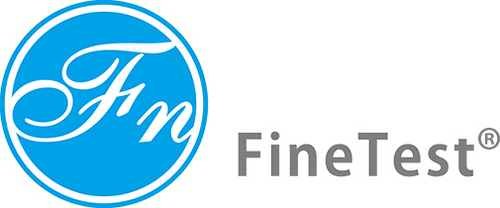Product Description
Recombinant Human Plasminogen protein (PLG) (Active) is available at Gentaur for Next week Delivery.
Gene Name: PLG
Alternative Names : EC 3.4.21.7,
Expression Region : 98-356aa
AA Sequence : VYLSECKTGN GKNYRGTMSK TKNGITCQKW SSTSPHRPRF SPATHPSEGL EENYCRNPDN DPQGPWCYTT DPEKRYDYCD ILECEEECMH CSGENYDGKI SKTMSGLECQ AWDSQSPHAH GYIPSKFPNK NLKKNYCRNP DRELRPWCFT TDPNKRWELC DIPRCTTPPP SSGPTYQCLK GTGENYRGNV AVTVSGHTCQ HWSAQTPHTH NRTPENFPCK NLDENYCRNP DGKRAPWCHT TNSQVRWEYC KIPSCDSSP
Sequence Info : Partial
Tag Info : Tag-Free
Theoretical MW : 29.7 kDa
Storage Buffer : Lyophilized from a 0.2 ?m filtered 20 mM NaAc, pH 5.5, 4 % mannitol
Endotoxin Level : Less than 1.0 EU/µg as determined by LAL method.-
Biological Activity : The specific activity determined by an assay on anti-proliferation and anti-migration using endothelial cells in vitro and anti-angiogenesis in vivo is 5.5 × 105 IU/mg.
Storage : Short term: -20°C; Long term: -80°C. Minimize freeze and thaw cycles.
Research Area : Cancer
Restriction : For Research Use Only. Not for use in diagnostic procedures, drug use, or for administration to humans or animals.
Relevance : Plasmin dissolves the fibrin of blood clots and acts as a proteolytic factor in a variety of other processes including embryonic development, tissue remodeling, tumor invasion, and inflammation. In ovulation, weakens the walls of the Graafian follicle. It activates the urokinase-type plasminogen activator, collagenases and several complement zymogens, such as C1 and C5. Cleavage of fibronectin and laminin leads to cell detachment and apoptosis. Also cleaves fibrin, thrombospondin and von Willebrand factor. Its role in tissue remodeling and tumor invasion may be modulated by CSPG4. Binds to cells. {ECO:0000269|PubMed:14699093}.; Angiostatin is an angiogenesis inhibitor that blocks neovascularization and growth of experimental primary and metastatic tumors in vivo. {ECO:0000269|PubMed:14699093}.
Function : Plasmin dissolves the fibrin of blood clots and acts as a proteolytic factor in a variety of other processes including embryonic development, tissue remodeling, tumor invasion, and inflammation. In ovulation, weakens the walls of the Graafian follicle. It activates the urokinase-type plasminogen activator, collagenases and several complement zymogens, such as C1 and C5. Cleavage of fibronectin and laminin leads to cell detachment and apoptosis. Also cleaves fibrin, thrombospondin and von Willebrand factor. Its role in tissue remodeling and tumor invasion may be modulated by CSPG4. Binds to cells.
Involvement in disease : Plasminogen deficiency (PLGD)
Subcellular location : Secreted
Protein Families : Peptidase S1 family, Plasminogen subfamily
Tissue Specificity : Present in plasma and many other extracellular fluids. It is synthesized in the liver.
Paythway : Complementandcoagulationcascades
Uniprot ID : P00747
 Euro
Euro
 British Pound
British Pound
 US Dollar
US Dollar








